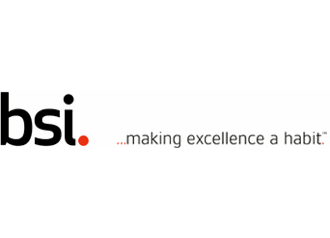/ Home / Maintaining continual improvement momentum in BCM
Maintaining continual improvement momentum in BCM
Does the phrase continual improvement turn you cold?
Do you feel under pressure to keep reinventing the Business Continuity Management System (BCMS) wheel?
What is continual improvement?
If you think that you have to find new ways to improve your Business Continuity system every day for the rest of your life, relax. Continual improvement is a state of mind as much as identifying tangible improvements.
Take a look at what is meant by the words continual and improvement.
Continual is often muddled up with the word continuous but they have different meanings and implications. Continuous is a gradual, never ending change where as continual is a more incremental or stepped change on an ongoing basis.
Improvement is the result of having gone through various activities with the aim of gaining benefit from them.
Continual improvement is a cyclical process. In other words, once a business objective has been achieved, the improvement process should start to look at better ways of doing it.
It also forms part of the “Plan Do Check Act” cycle that management systems refer to.
to.
 to.
to.
This cycle aims to establish, implement, operate, monitor, exercise, maintain and improve the effectiveness of the management system.
It comes naturally to people to always work with continual improvement. If this wasn’t the case the world would stand still. It's in our nature to make things work better. You have to set up processes so that everyone in your organisation can work with continual improvement.
Where do I start?
Before you can look at ways to improve your performance you have to know where you currently stand. You need a benchmark on which to base your improvement.
You should anticipate a level of reluctance to change what you do or the way that you approach your work. You are potentially looking to change the culture within your organisation and this should not be underestimated.
9 steps to follow:
1. Establish your current performance benchmark
2. Identify the need to improve and a realistic improvement objective
3. Obtain management buy-in to the improvement
4. Identify ways of achieving the improvement area (involve staff wherever possible to gain buy in)
5. Implement improvement
6. Measure the impact of the improvement
7. Check if the improvement objective has been achieved
8. Report findings to management team
9. Communicate changes internally
BS 25999:2 Requirements
The effectiveness of the BCMS shall continually be improved. The standard suggests that this may be achieved through:
The review of the business continuity policy and objectives
Audit results
Analysis of monitored events (disruptions for example)
Preventive and corrective action
Management review
These are all activities that must be undertaken as part of BS 25999:2. There are others as well. The results will (hopefully) lead you to consider actions required to correct issues or find a better way of doing it. In other words, to continually improve your processes.
A working example of continual improvement
Scenario
A business continuity exercise is testing the validity of the telephone call tree in a company. In an emergency it is crucial to be able to reach everybody in an organisation.
Problem
It turns out that some staff names were no longer valid and staff joining the company within the last 3 months had not been added to the list. It was not possible to call everyone as part of the exercise.
Resulting improvements
As a result the call tree was updated and a monthly reminder was issued to department managers to review and update their staffs’ details on the call tree.
The development of the new phone list and update system handling was simple to implement.
Without the regular update of the phone list your business can be seriously damaged if you can’t contact staff out-of-hours as a result of an incident.
Final tips for your BCM continual improvements
Remember to keep an eye on the overall business. Improvements could lead to enhanced business performance through costs reduction, productivity, improved customer satisfaction and repeated business.
Submitted article - Hilary Estall - Perpetual Solutions













